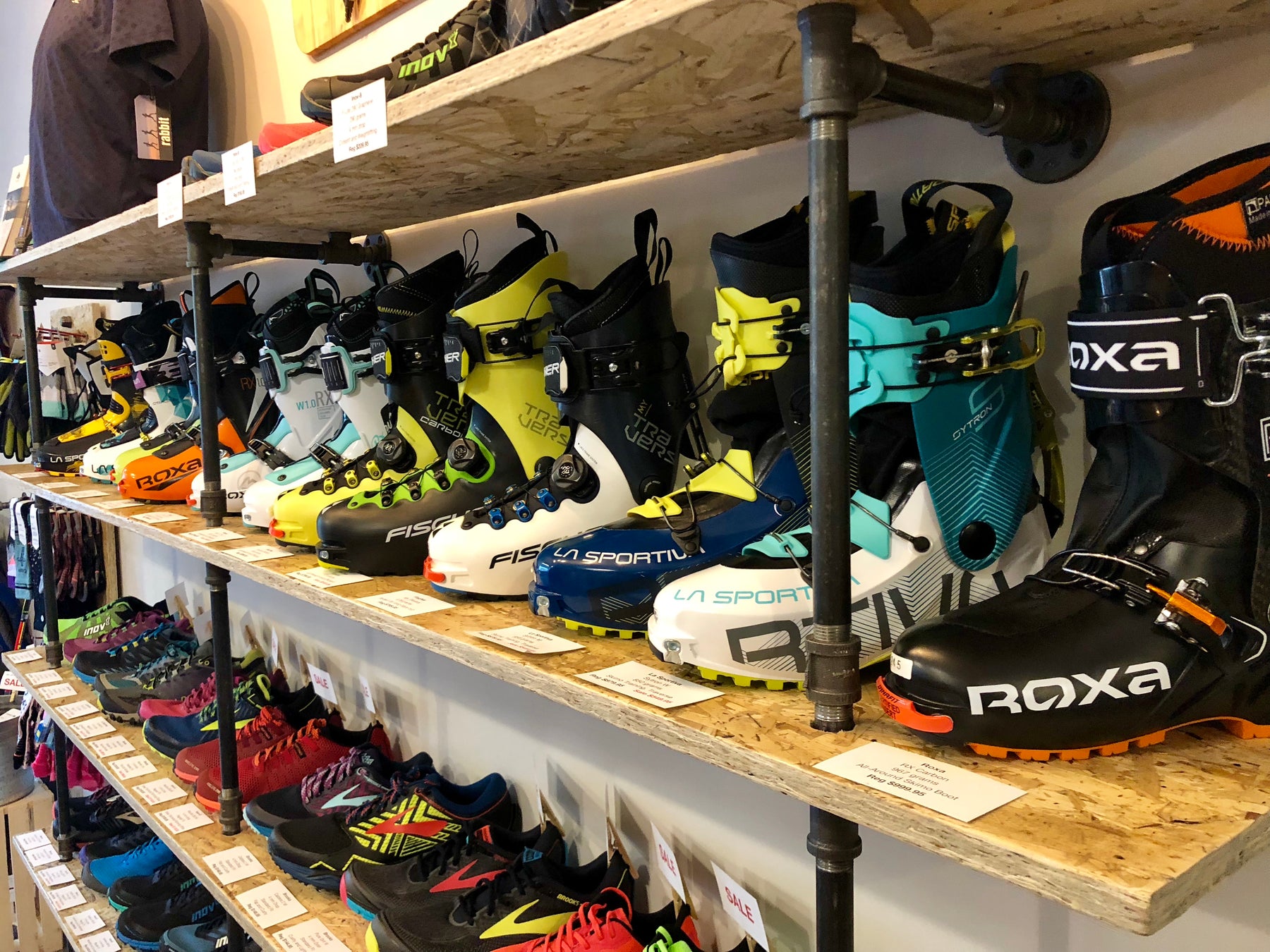Order over $100 and get Free shipping in Canada
Free shipping Across Canada On Orders Over $100

Finding the right ski boot is simple for some people, but complicated for most. Everyone’s foot is different and while everybody can usually find an OK fit, few people get that magic 10/10 fit right out of the box. Don’t worry though, almost all backcountry skiing boots are easily customizable to perfectly match the shape of your foot. With the right advice, you can turn that 8/10 fit into a perfect combination that will feel great even after hours and hours of uphill and downhill skiing.
The quest for the perfect ski boot starts with trying various models by various brands. While many stores can offer you basic advice, in some instances you will have to ask for a specific size and model and you won’t get anything more than a passive look while you decide your fate. If that is the case and you can’t find somewhere else where to try boots on, here are a couple tips to “self-assess” the overall fit of a boot.
Look at Your Feet
Few people have perfectly straight feet devoid of any bumps or different shapes. How are your feet? Do you have bunions or other bony bulges? If that is the case, you might not find a perfect match but remember that a competent store can makes some shell modifications to your boot afterwards. Think about the rest of the fit and expect that bunion to feel a little tight. Are your feet on the wider side of things or narrow and skinny? Which toe is the longest? All those variables influence your choice in a ski boot. Take a good look at your feet and identify the potential problematic areas.
Verifying the Length
A common mistake among backcountry skiers is to size their boots too big. While you do not want to slam your toes against the shell, remember that the goal is to have a secure and tight fit in ski mode out of the box. Too big of a shell and you will loose the precision that a well sized ski boot can offer. Checking length is super easy. Standing with your foot on an insole inside the shell, slide forward until your toes are touching the front of the shell. Then slide your fingers between the shell and your heel and check how much space there is. Anything around one and a half to two fingers is perfect. One finger or less is likely too small and will cause trouble when in walk mode.
Ski boot shells only run in full sizes. This means that for a given model, a mondo 26.0 and 26.5 is the exact same shell. There are no half sizes in ski boots and the slightly smaller feel comes from a shorter liner, a bit more padding or a simple bootboard under the liner. Once packed down, the boots will feel the same. Scarpa does things a bit differently in the fact that they still do full size shells, but their half and full size run the same instead. That means that for a Scarpa, a 26.0 would be the same plastic shell as a 25.5
Assessing the Overall Fit
While you are still standing inside the boot shell. Pay attention to potential pressure points that you might already feel. With your foot centered inside the boot, do you feel some contact points with the plastic already? If that is the case, this will be a problem area once you put the liner in. Yet again, some of those pressure points are easy fixes if you get in touch with a boot fitter. An ideal boot leaves just enough room between your foot and the plastic for the liner to fill it.
Once you have an idea of how the shell fits your foot, try the whole package with the liner, the insole and a thin ski sock. What you are looking for can be compared to a firm handshake. The ideal fit out of the box would feel a bit tight as opposed to perfect or loose. Once the liners are molded, you will gain a little bit more space. If your toes are just kissing the front of the boot in walk mode, the heat molding process will also create some length. Again, think about that firm handshake that locks your heel and your instep in, but that lets your toes wiggle move freely. You might get lucky and find the perfect boot, but most fits aren’t perfect out of the box and this is where consulting a competent boot fitter becomes really helpful. Remember, it is easy to start with a boot that feel like 8/10 and make it a 10/10, but if the model you’ve been eyeing for months feel like 4/10 out of the box, it will be a lot of work to make it feel better and you might never get that perfect fit.
Let your feet decide!
SkiUphill offers liner molding and boot fitting services at our store in Canmore. Stop in today for expert advice from Joel, physiotherapist and co-owner of SkiUphill, or one of our awesome staff. Contact us to book a boot fitting appointment :)
{"one"=>"Select 2 or 3 items to compare", "other"=>"{{ count }} of 3 items selected"}